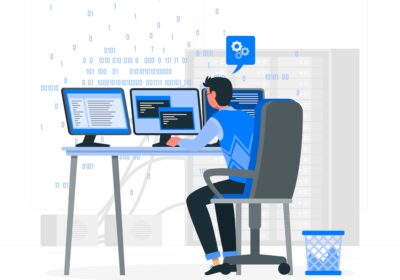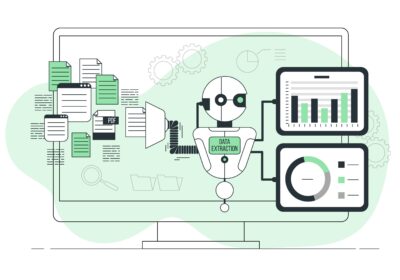Software security is a crucial aspect of software development that ensures the protection of data, systems, and users from cyberattacks. Software security involves applying security principles and practices throughout the software development lifecycle (SDLC), from planning and design to testing and deployment.
Software security is not only a technical issue but also a business one. Software security can affect the reputation, trust, and profitability of a software company, as well as the satisfaction and safety of its customers. Therefore, software security should be a priority for every software developer and organisation.
In this blog post, we will explore some of the best practices for building secure software solutions, covering the latest trends, best practices, and expert insights.
Why Software Security Matters
Software security
matters because cyberattacks are becoming more frequent, sophisticated, and damaging. According to a report by
IBM, the global average cost of a data breach in 2021 was $4.24 million, the highest in 17 years.
Moreover, the report found that the average time to identify and contain a breach was 287 days, which means that attackers can cause significant harm before being detected and stopped.
Cyberattacks can have serious consequences for software companies and their customers, such as:
- Loss of data, money, and reputation
- Legal liabilities and regulatory
penalties - Customer dissatisfaction and churn
- Business disruption and downtime
- Competitive disadvantage and loss of market share
Therefore, software security is essential for preventing or minimising these risks and ensuring the quality, reliability, and performance of software solutions.
How to Build Secure Software Solutions
Building secure software solutions requires adopting a holistic approach that integrates security into every stage of the SDLC. This approach is known as secure software development or DevSecOps (Development, Security, Operations). DevSecOps aims to embed security into the culture, processes, and tools of software development teams, enabling them to deliver secure software faster and more efficiently.
Here are some of the key steps and best practices for building secure software solutions using DevSecOps:
1. Foster a DevSecOps culture and mindset
The first step in building secure software solutions is to foster a DevSecOps culture and mindset among software developers and other stakeholders. This means that everyone involved in the software development process should be aware of the importance of security, share the responsibility for security, and collaborate effectively to achieve security goals.
Some of the ways to foster a DevSecOps culture and mindset are:
- Provide regular training
and education on security
topics- Establish clear roles and expectations for security tasks
- Encourage communication and feedback on security issues
- Reward good security
practices and behaviours - Promote a
culture of learning and continuous improvement
2. Consider security from the very beginning
The second step in
building secure software solutions is to consider security from the very beginning of the software development
process. This means that security should be an
integral part of the planning
and design phases,
not an afterthought or an add-on.
One of the techniques to consider security from the very beginning is threat modelling. Threat modelling involves analysing the software architecture and identifying potential security threats and vulnerabilities. This helps in designing the software with security in mind and implementing the necessary security controls4.
Some of the benefits of threat modelling are:
- It helps to prioritise security
risks and allocate
resources accordingly- It helps to avoid costly
rework or redesign
later in the development process - It helps to improve communication and
collaboration among developers, testers, and
security experts - It helps to comply
with security standards and regulations
- It helps to avoid costly
3. Use code reviews to identify potential security issues
The third step in building secure software solutions is to use code reviews to identify potential security issues in the source code. Code reviews are a process of examining the code written by other developers to check its quality, functionality, readability, maintainability, and security3.
Code reviews can help to detect and fix security issues such as:
- Coding errors or bugs that can lead to vulnerabilities or exploits
- Poor coding practices or standards that can affect performance or usability
- Insecure use of libraries or frameworks that can
introduce dependencies or weaknesses - Missing or inadequate documentation or comments
that can hinder understanding or
maintenance
Some of the best practices for code reviews are:
- Use a code review checklist
or tool to ensure consistency and completeness- Follow the principle
of least privilege and limit access to sensitive code or data - Use peer reviews or pair programming to leverage
different perspectives and expertise - Provide constructive feedback
and suggestions for improvement - Incorporate code reviews
into the regular
development workflow and schedule
- Follow the principle
4. Use code analysis tools to automate security testing
The fourth step in building secure software solutions is to use code analysis tools to automate security testing. Code analysis tools are software applications that can scan, analyse, and test the source code for security issues, such as:
- Syntax errors or typos that can
cause compilation or runtime errors- Code smells or anti-patterns that can
indicate poor design or quality - Security vulnerabilities or flaws that can expose
the software to attacks - Compliance violations or deviations from security standards
or regulations
- Code smells or anti-patterns that can
Code analysis tools can help to improve software security by:
- Saving time and effort by automating tedious or repetitive tasks
- Increasing accuracy and reliability by reducing human
errors or biases - Enhancing coverage and depth by testing large or complex
code bases - Providing actionable insights and
recommendations for remediation Some of the
types of code analysis
tools are: - Static code analysis tools: These tools analyse
the code without executing it, looking for
potential issues at the syntax, structure, or logic level. Examples of static
code analysis tools are SonarQube, Coverity, and Veracode. - Dynamic code analysis tools: These tools analyse
the code while executing it, looking for
potential issues at the runtime or behaviour level. Examples of dynamic code analysis
tools are Burp Suite, OWASP ZAP, and Nmap. - Interactive code analysis tools: These tools
combine static and dynamic analysis techniques,
looking for potential issues at both the code and runtime level. Examples of interactive code analysis tools are Contrast
Security, Hdiv Security,
and Seeker.
- Increasing accuracy and reliability by reducing human
5. Use popular and well-maintained libraries and frameworks
The fifth step in building secure software solutions is to use popular and well-maintained libraries and frameworks. Libraries and frameworks are collections of reusable code that provide common functionality or features for software development, such as:
- User interface components or templates
- Data structures or algorithms
- Database access or manipulation
- Networking or communication protocols
- Security mechanisms or encryption
Libraries and frameworks can help to improve software security by:
- Reducing the amount
of code that needs
to be written from scratch- Leveraging the expertise and experience of other
developers or communities - Benefiting from regular updates and patches that fix bugs or vulnerabilities
- Following best practices
and standards that ensure quality and compatibility
- Leveraging the expertise and experience of other
However, not all libraries and frameworks are equally secure or reliable. Some of them may contain outdated, insecure, or malicious code that can compromise the software. Therefore, it is important to choose libraries and frameworks that are:
- Popular and widely used by other
developers or organisations- Well-maintained
and supported by active developers or communities - Secure and compliant
with security standards or regulations - Compatible and interoperable with other libraries or frameworks
- Well-maintained
Some of the examples
of popular and well-maintained libraries and frameworks are:
- React: A JavaScript library for building user interfaces
- Django: A Python
framework for building
web applications - Spring Boot: A Java framework
for building microservices - Laravel: A PHP framework for building web applications
- Flutter: A Dart framework for building cross-platform applications
- Django: A Python
6. Use secure coding practices and standards
The sixth step in building secure software solutions is to use secure coding practices and standards. Secure coding practices and standards are guidelines or rules that help developers write code that is secure, reliable, and maintainable. Secure coding practices and standards can vary depending on the programming language, platform, or domain of the software, but some of the common ones are:
- Use descriptive and consistent naming
conventions for variables, functions, classes,
etc.- Use proper indentation and formatting for code
readability and clarity - Use comments and documentation for code explanation and understanding
- Use modular and reusable code for code simplicity
and reusability - Use error
handling and logging for code robustness and debugging - Use encryption and hashing for data
protection and integrity - Use input validation and output sanitization for data security and quality
- Use secure communication protocols such as HTTPS
or SSL/TLS for data confidentiality and authenticity - Use authentication and authorization mechanisms
such as passwords, tokens, or certificates for access control and identity
verification - Use secure design patterns such as MVC
(Model-View-Controller) or REST (Representational State Transfer) for code
organisation and structure
- Use proper indentation and formatting for code
Some of the resources that provide secure coding practices and standards are:
- OWASP Secure Coding Practices: A guide that
covers the most common security issues and best practices for web application
development- SEI CERT Coding Standards: A collection of
coding standards that address security issues for various programming languages such as C, C++, Java, Python,
etc - ISO/IEC 27034: An international standard that
provides a framework and guidelines for secure
software development
- SEI CERT Coding Standards: A collection of
7. Use continuous integration and continuous delivery (CI/CD) pipelines to automate software delivery
The seventh step in building secure software solutions is to use continuous integration and continuous delivery (CI/CD) pipelines to automate software delivery. CI/CD pipelines are workflows that automate the processes of building, testing, deploying, and monitoring software, enabling faster and more frequent software releases.
CI/CD pipelines can help to improve software
security by:
- Enabling early detection and resolution of security issues
- Reducing human intervention and errors in software delivery
- Increasing visibility
and transparency of software
quality and performance - Supporting feedback loops and improvement cycles
for software security Some of the
tools that can help to create and manage CI/CD pipelines are: - Jenkins: An open-source tool that automates
various stages of software
delivery - GitHub Actions: A feature of GitHub that allows
developers to create workflows for software delivery - Azure DevOps: A cloud-based platform that
provides a suite of services for software delivery - AWS CodePipeline: A cloud-based service that
integrates with other AWS services for software delivery
Conclusion
Software security is a vital aspect of software development that can have a significant impact on the success and reputation of a software company, as well as the satisfaction and safety of its customers.
Software security requires adopting a holistic approach that integrates security into every stage of the software development lifecycle, from planning and design to testing and deployment.



